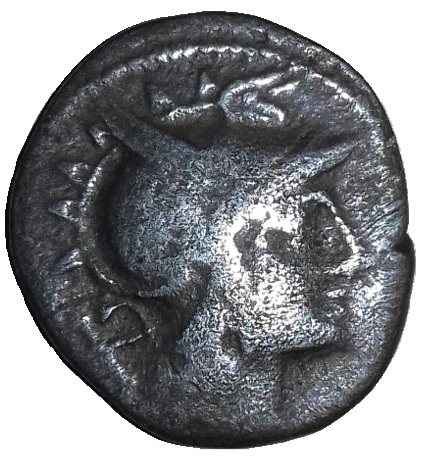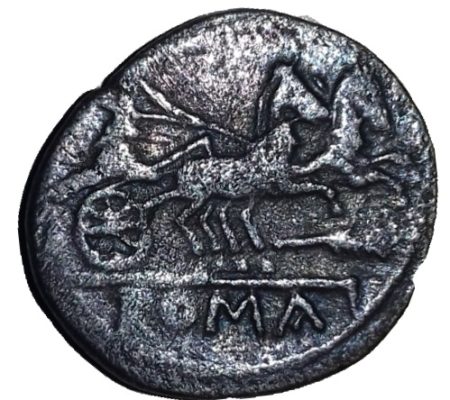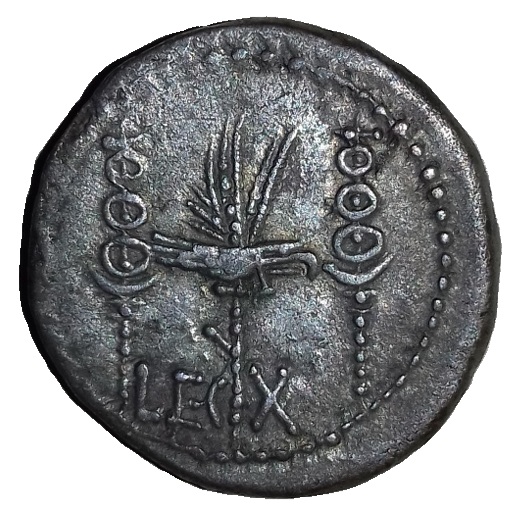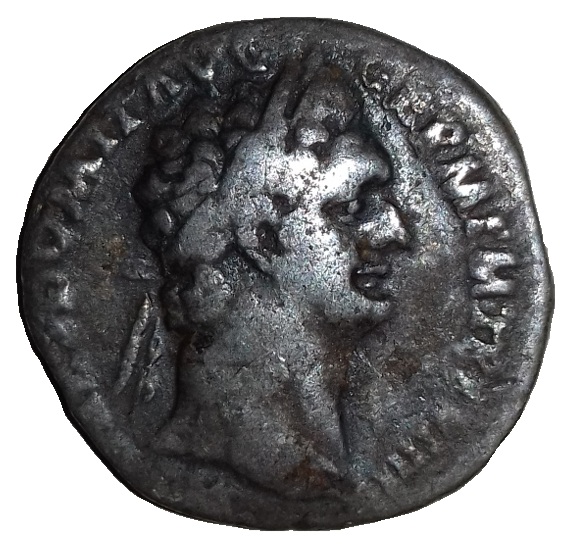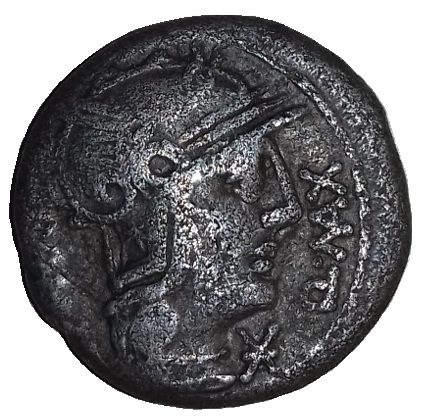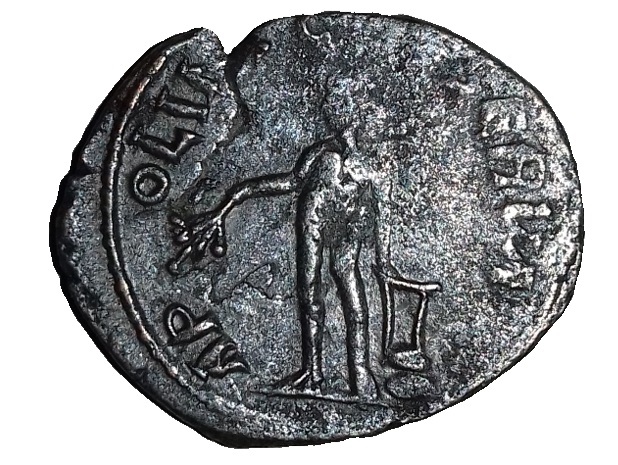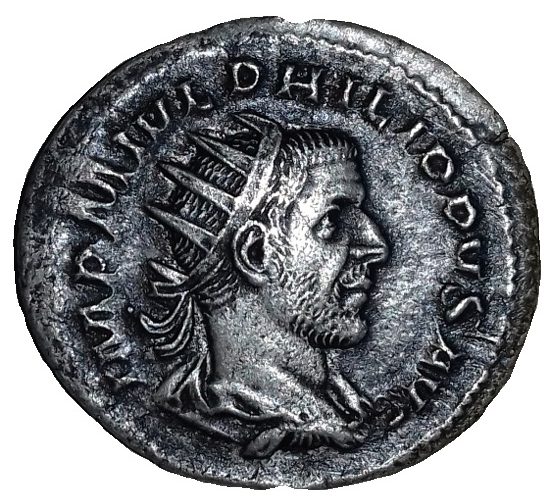Hi everyone, how are you? Today, in this new article, I will tell you about 5 Roman Coins in silver. I wrote an article about this a few weeks ago. If you want to read it, it’s available here: 5 Roman Coins in Silver. This article is therefore the third in this series where I present to you 5 Roman coins every week. As a result and in the same way as in the previous article “5 Roman coins in billon”, we are going to do numismatics here. So we will decipher the currencies and try to understand the messages they wanted to convey in Roman times. In this article, therefore, there will be analysis, description and interpretation. Good reading.
First Roman Coin in silver : the denarius Anonymous
For this first coin, we start with a denarius from the Roman Republic which is anonymous. I guess that means, as the name suggests, that he was not attached to any public figure in Roman times. We therefore cannot know who to identify it to. This is why it is marked “anonymous”. However, this mention is very commonly used in the world of numismatics and not only for Roman coins but also for example, for feudal coins.
This silver coin weighs 3.28 grams for 18 mm in diameter. On its obverse, we can see the helmeted head of Roma with the only legend “X”. This inscription tells us the value of the denarius is of 10 as (read my article about Roman silver coins to find out more). On its reverse, we can see a chariot made up of two galloping horses, rolling on a palm. The only legend appearing is “ROMA” which obviously means “Rome” and which indicates here the place of manufacture.
This coin is therefore interesting from the historical point of view of the denarius. Indeed, it remains rather “poor” at the level of the legend and the reliefs but it allows us to observe the fact that the denarius was worth 10 as at that time. Which was not always the case. We can therefore date this coin from the 2nd century BC.
Second Roman Coin in silver : the denarius of Marcus Antonius
This second coin is a denarius of the legions of Marcus Antonius. Marcus Antonius was born January 14, 83 BC in Rome and died August 1, 30 BC in Alexandria. He was one of Caesar’s henchmen and was very close to this denarius. They worked together on several occasions, notably during the Civil War from 49 to 45 BC or the Gallic War (54-51 BC). Subsequently, he had a long political career during which he had many titles, including that of Consul in 44 BC. Throughout his life, he combined his political and military status. He committed suicide on August 1, 30 BC in Alexandria because of the suicide of Cleopatra.
This silver coin weighs 3.27 grams for 17 mm in diameter. On its obverse, we can see a galley sailing to the right, surrounded by the captions “ANT AVG III VIR RPC” (Antoine, augure, triumvir [sort of Roman magistrate] for the restoration of the Republic). On its reverse, we can see an eagle with outstretched wings between two banners. The inscribed legends are “LEG X” (legion X [10]).
This denier is therefore that for the tenth legion. The X legion or Gémina (Twin in English) was created in 58 BC and had the bull as its symbol. The first person to use it was Julius Caesar. He considered her to be the legion in whom he always trusted. It was used in particular during the siege of Gergovie
Third Roman Coin in silver : the denarius of Domitianus
This third coin is a Domitian denarius. Domitian, whose real name is Titus Flavius Domitianus is a Roman emperor born October 24, 51 AD in Rome. He died in his hometown on September 18, 96 AD. Domitian was part of the Flavian dynasty and was the eleventh emperor to reign. He ruled from 81 to 96 AD. He succeeded Titus and Nerva will be his successor. During his reign, he made campaigns as in Brittany but also wars against the Germans and the Dacians. In addition, he launched a program to rebuild Rome which had been affected by several fires and revalued the coin. Indeed, the weight of the deniers went from 2.87g to 3.26g then from 3.26g to 3.04g. He died in 96 AD assassinated by members of his court.
This silver coin weighs 3.07 grams for 18 mm in diameter. On its obverse, we can see the bust of Domitian, surrounded by the captions “IMP CAES DOMIT AVG GERM P M TR P XV” (The Emperor, Caesar, Domitian, August Germanic, Grand Pontiff, endowed with the fifteenth tribunitian power). On his lapel, we can see Minerva standing, holding a thunderbolt in the right hand and a javelin in the left hand. At his feet, slightly set back, a shield. The inscribed captions are “IMP XXII COS XVII CENS P P P” (Twenty second imperial greeting, consul for the seventeenth time, perpetual censor, father of the country).
As can be read on the reverse of the coin, when it was minted, Domitian was Consul for the 17th time. But it was in 96 AD. We can therefore deduce that this coin was minted on this date.
Fourth Roman Coin in silver : the denarius of Geta
This fourth Roman coin is a denarius of Geta. Geta whose real name is Publius Septimius Geta was born on March 27, 189 AD in Milan. He died on December 26, 211 AD in Rome. In his twentieth year, he is taken to Brittany with his father and Caracalla, to learn the basics of warfare and to change the daily life he has in Rome. On his return, he reigns as co-emperor with his brother Caracalla. However, they hate each other and Caracalla ends up stabbing her brother at a family reunion while the latter is in the arms of Julia Domna: their mother. Thus, Geta will have had only a short reign of not even a year (210-211 AD).
This silver coin weighs 2.79 grams for 18 mm in diameter. On its obverse, we can see the bust of Géta, surrounded by the captions “P SPETIMIVS GETA CAES” (Publius Septimius Geta césar). On her lapel, Minerva can be seen wearing a helmet and armor, standing, holding a haste in her left hand and a shield, posed at her feet, in her right hand. The inscribed captions are “MINERV SANCT” (Holy Minerva).
This coin was therefore minted when Geta was Caesar. However, it was in 198 AD. We can therefore deduce that this coin was minted at this time, around 200 AD.
Fifth Roman Coin in silver : the denarius of Alexander Severus
This fifth Roman coin is a denarius of Alexander Severus. Severus, whose real name is Marcus Aurelius Severus Alexander is a Roman emperor born October 1, 208 Arca Caeserea (Syrian city) and died in mid March 235 in Moguntiacum (city Mainz in Germany). He began his reign in 222 AD. He was therefore 14 years old when he assumed this role of sovereign. Which is very young. During his reign, he demonstrated wisdom and simplicity both in his life and through his actions. He is also implementing numerous monetary reforms to help the poorest. However, his military side was weak since he was considered too “soft” and he also had too much influence from his mother. What made his disfavour with the armies. His reign ended in 235 when Alexander Severus died assassinated by the Germans.
This coin weighs 2.16 grams (here it is a stuffed coin hence the low weight) and 18 mm in diameter. On its obverse, we can see the bust of Alexander Severus, surrounded by the captions “IMP C M APR SEV ALEXAND AVG” (Emperor Caesar Marcus Aurelius Severus Alexander Augustus). On her lapel, Victoria can be seen standing, holding a crown in her right hand and a palm in her left hand. The captions listed are “VICTORIA AVG” (The Victory of Augustus).
This coin was therefore struck when Alexander Severus had just become emperor (august). However, it was in 222 AD. We can therefore assume that this coin dates from this time.
This article is now finish. Hope you liked it and discovered new things. Also, feel free to tell me in the comments space what topic you would like me to cover for a future article. Regarding this one, we will continue this series of coins presentation with “5 Roman gold coins”. See you next week !
Receive my free book Around the Roman Coin by clicking here


